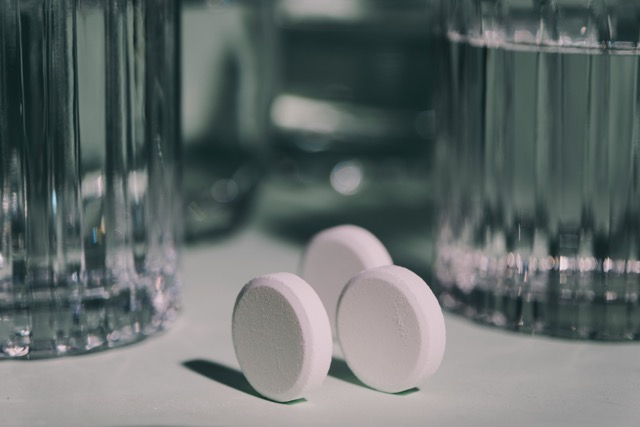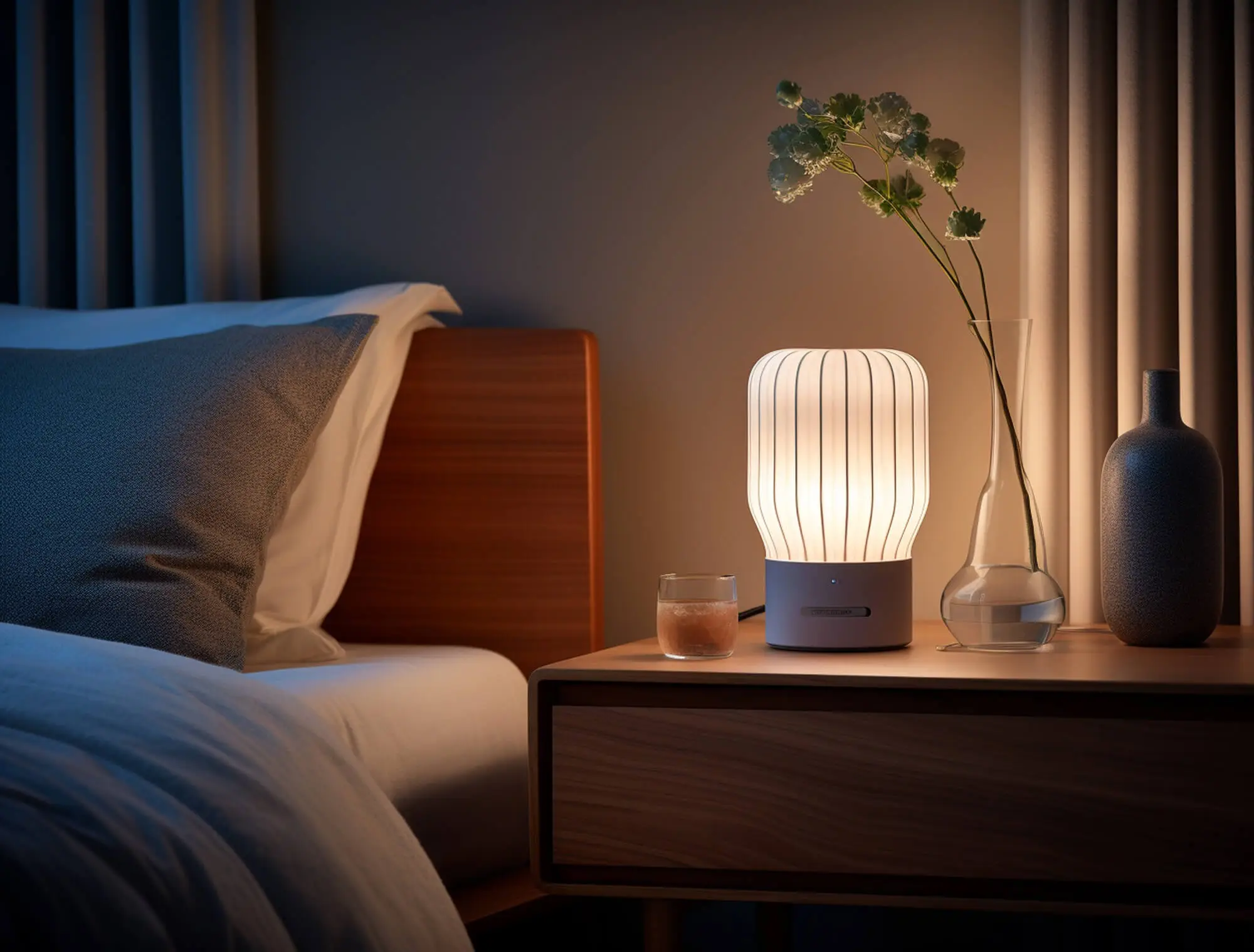Biological Age Tests: Useful or Just a Trend?
Fact-checking biological age testing: benefits, limitations and future prospects

In the world of longevity medicine, the concept of biological aging is becoming increasingly important. While some experts regard biological age tests as interesting research tools, others express doubts about their clinical relevance. So does it make sense to know your biological age? Or will it remain a nice but not very useful data point? Let's take a look at the arguments put forward by both sides.
Critical voices: How meaningful are biological age tests?
Skeptics argue that the tests currently available are not precise enough and offer little practical benefit for individual health optimization. In her opinion, important health markers such as insulin sensitivity, blood pressure or blood lipids are more meaningful than an abstract age figure. An increased APOB value or an increased HgbA1c value provides clear instructions for prevention, while a biological age statement often does not entail any direct measures. The tests are therefore “interesting” rather than “clinically relevant.”
Research perspective: A glimpse into the future
Proponents of biological age tests, on the other hand, see enormous potential, particularly for research. Studies have shown that epigenetic markers such as DNA methylation patterns correlate with aging processes and can potentially be used to evaluate intervention measures. For example, a study by Horvath et al. has shown that epigenetic clocks allow an accurate estimation of biological age. They help to measure the effectiveness of interventions over longer periods of time and provide insight into aging processes such as immunosenescence or DNA methylation patterns that have so far received little attention. In addition, as a supplement to conventional diagnostic methods, these tests could provide new insights into individual aging in the future and open up innovative therapeutic approaches.
A balanced approach: integration into a comprehensive health concept
The best solution is likely to be a combination of both approaches. Many experts agree that biological age tests should be integrated into existing diagnostic frameworks — but with validated methods and clear clinical relevance. Epigenetic clocks such as the Horvath clock have shown that they determine biological age relatively precisely. Other methods, such as the GRIMAGE test, provide additional information about the individual mortality risk and could become more important in clinical practice in the next few years. The future of these tests will depend on how they can be combined with established biomarkers and actually lead to better health outcomes.
Conclusion: A look at the big picture
While biological age tests are currently still struggling with methodological challenges, they offer exciting prospects for personalized medicine of the future. Epigenetic clocks are already being used in clinical trials to evaluate the effectiveness of anti-aging interventions such as calorie restriction or metformin. In oncology, too, the analysis of biological aging processes could help develop personalized treatment strategies. However, anyone who really wants to optimize their health status should continue to keep an eye on the proven health markers and build individual prevention measures on them. Such tests may be a valuable addition in the future — but they are far from replacing the foundations of an evidence-based health strategy.
References
Publiziert
10.2.2025
Kategorie
Lifestyle

Experte
Scientific Terms
Aging
The biological definition of aging may include all changes in the body associated with aging, including growth, development, and maturation. Some biologists reserve the term senescence (see below) for changes associated with loss of function and degradation later in life, but in modern parlance aging is synonymous with senescence. Demographers have their own definition: aging is the increase in the probability of death associated with changes in the body. This allows for the possibility of negative senescence (see above) or declining aging, in which the probability of death decreases with increasing age.
Biological Age
Biological age is the age of cells in the body, which is determined by various properties and biomarkers that correlate with aging and decay in research.
Biomarkers
A specific substance, physical characteristic, gene, etc. that can be measured to indicate the presence or progress of a disease.
DNA Methylation Clock
Changes in the number and locations of DNA methylation marks on DNA can be used to predict lifespan and mark the time from birth. When an organism is epigenomically reprogrammed or cloned, the methyl labels are removed, reversing the age of the cell.
Epigenetic clock
A type of DNA clock that relies on measuring natural DNA methylation levels to estimate the biological age of a tissue, cell type, or organ, such as the Horvath clock.
Genetics
Science of heredity and genetic variation.
Horvath's Clock
Horvath's Clock (clock) is the epigenetic aging clock developed by Dr. Steve Horvath. He used human samples to identify 353 biomarkers that correlate with aging. This study modernized biological age measurement and has remained the standard for biological age determination ever since.
In the world of longevity medicine, the concept of biological aging is becoming increasingly important. While some experts regard biological age tests as interesting research tools, others express doubts about their clinical relevance. So does it make sense to know your biological age? Or will it remain a nice but not very useful data point? Let's take a look at the arguments put forward by both sides.
Critical voices: How meaningful are biological age tests?
Skeptics argue that the tests currently available are not precise enough and offer little practical benefit for individual health optimization. In her opinion, important health markers such as insulin sensitivity, blood pressure or blood lipids are more meaningful than an abstract age figure. An increased APOB value or an increased HgbA1c value provides clear instructions for prevention, while a biological age statement often does not entail any direct measures. The tests are therefore “interesting” rather than “clinically relevant.”
Research perspective: A glimpse into the future
Proponents of biological age tests, on the other hand, see enormous potential, particularly for research. Studies have shown that epigenetic markers such as DNA methylation patterns correlate with aging processes and can potentially be used to evaluate intervention measures. For example, a study by Horvath et al. has shown that epigenetic clocks allow an accurate estimation of biological age. They help to measure the effectiveness of interventions over longer periods of time and provide insight into aging processes such as immunosenescence or DNA methylation patterns that have so far received little attention. In addition, as a supplement to conventional diagnostic methods, these tests could provide new insights into individual aging in the future and open up innovative therapeutic approaches.
A balanced approach: integration into a comprehensive health concept
The best solution is likely to be a combination of both approaches. Many experts agree that biological age tests should be integrated into existing diagnostic frameworks — but with validated methods and clear clinical relevance. Epigenetic clocks such as the Horvath clock have shown that they determine biological age relatively precisely. Other methods, such as the GRIMAGE test, provide additional information about the individual mortality risk and could become more important in clinical practice in the next few years. The future of these tests will depend on how they can be combined with established biomarkers and actually lead to better health outcomes.
Conclusion: A look at the big picture
While biological age tests are currently still struggling with methodological challenges, they offer exciting prospects for personalized medicine of the future. Epigenetic clocks are already being used in clinical trials to evaluate the effectiveness of anti-aging interventions such as calorie restriction or metformin. In oncology, too, the analysis of biological aging processes could help develop personalized treatment strategies. However, anyone who really wants to optimize their health status should continue to keep an eye on the proven health markers and build individual prevention measures on them. Such tests may be a valuable addition in the future — but they are far from replacing the foundations of an evidence-based health strategy.
Referenzen
Publiziert
10.2.2025
Kategorie
Lifestyle

Wissenschaftliche Begriffe
Aging
The biological definition of aging may include all changes in the body associated with aging, including growth, development, and maturation. Some biologists reserve the term senescence (see below) for changes associated with loss of function and degradation later in life, but in modern parlance aging is synonymous with senescence. Demographers have their own definition: aging is the increase in the probability of death associated with changes in the body. This allows for the possibility of negative senescence (see above) or declining aging, in which the probability of death decreases with increasing age.
Biological Age
Biological age is the age of cells in the body, which is determined by various properties and biomarkers that correlate with aging and decay in research.
Biomarkers
A specific substance, physical characteristic, gene, etc. that can be measured to indicate the presence or progress of a disease.
DNA Methylation Clock
Changes in the number and locations of DNA methylation marks on DNA can be used to predict lifespan and mark the time from birth. When an organism is epigenomically reprogrammed or cloned, the methyl labels are removed, reversing the age of the cell.
Epigenetic clock
A type of DNA clock that relies on measuring natural DNA methylation levels to estimate the biological age of a tissue, cell type, or organ, such as the Horvath clock.
Genetics
Science of heredity and genetic variation.
Horvath's Clock
Horvath's Clock (clock) is the epigenetic aging clock developed by Dr. Steve Horvath. He used human samples to identify 353 biomarkers that correlate with aging. This study modernized biological age measurement and has remained the standard for biological age determination ever since.
.svg)













